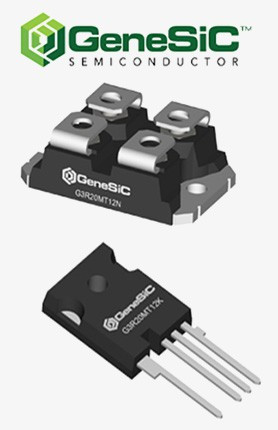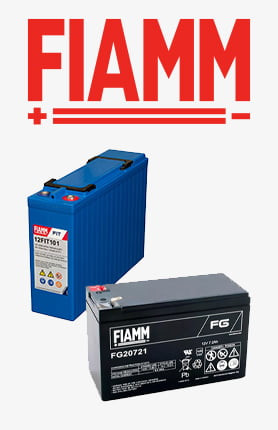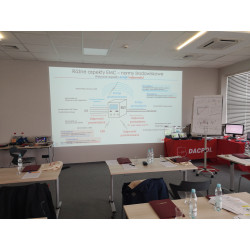Трябва да сте влезли в
-
moreX
-
Компоненти
-
-
Category
-
полупроводници
- Диоди
- Тиристори
-
Електрически изолирани модули
- Електроизолирани модули VISHAY (IR).
- Електроизолирани модули INFINEON (EUPEC).
- Електрически изолирани модули на Semikron
- Електроизолирани модули POWEREX
- Електроизолирани модули IXYS
- Електроизолирани модули от POSEICO
- Електрически изолираните модули на ABB
- Електроизолационни модули от TECHSEM
- Go to the subcategory
- Мостови токоизправители
-
Транзистори
- GeneSiC транзистори
- Mitsubishi SiC MOSFET модули
- STARPOWER SiC MOSFET модули
- ABB SiC MOSFET модули
- IGBT модули от MITSUBISHI
- Транзисторни модули MITSUBISHI
- MITSUBISHI MOSFET модули
- Транзисторни модули ABB
- IGBT модули от POWEREX
- IGBT модули - от INFINEON (EUPEC)
- Полупроводникови елементи от силициев карбид
- Go to the subcategory
- Шофьори
- Силови блокове
- Go to the subcategory
- Преобразуватели за ток и напрежение LEM
-
Пасивни компоненти (кондензатори, резистори, предпазители, филтри)
- Резистори
-
Предпазители
- Миниатюрни предпазители за електронни системи серия ABC и AGC
- Бързодействащи тръбни предпазители
- Забавени вложки с GL/GG и AM характеристики
- Изключително бързи предпазители
- Британски и американски стандартни бързодействащи предпазители
- Бързодействащи предпазители европейски стандарт
- Тягови предпазители
- Предпазители за високо напрежение
- Go to the subcategory
-
Кондензатори
- Кондензатори за двигатели
- Електролитни кондензатори
- Icel филмови кондензатори
- Силови кондензатори
- Кондензатори за постояннотокови вериги
- Кондензатори за компенсация на мощността
- Кондензатори за високо напрежение
- Кондензатори за индукционно нагряване
- Импулсни кондензатори
- DC LINK кондензатори
- Кондензатори за AC/DC вериги
- Go to the subcategory
- Филтри против смущения
- Суперкондензатори
- Защита от пренапрежение
- Разкриващи емисионни филтри TEMPEST
- Защита от пренапрежение
- Go to the subcategory
-
Релета и контактори
- Теория на релетата и контакторите
- AC 3-фазни твърдотелни релета
- DC твърдотелни релета
- Регулатори, системи за управление и аксесоари
- Мек старт и реверсивни контактори
- Електромеханични релета
- Контактори
- Ротационни превключватели
-
Еднофазни AC твърдотелни релета
- Еднофазни променливотокови полупроводникови релета Серия 1 | D2425 | D2450
- Еднофазни AC полупроводникови релета CWA и CWD серия
- Еднофазни AC полупроводникови релета серии CMRA и CMRD
- Еднофазни AC твърдотелни релета PS серия
- AC твърдотелни релета двойни и четворни серии D24 D, TD24 Q, H12D48 D
- Еднофазни полупроводникови релета от серия GN
- Еднофазни променливотокови твърдотелни релета серия CKR
- Монофазни AC релета за DIN шина ERDA и ERAA СЕРИЯ
- Монофазни AC релета за ток 150А
- Двойни твърдотелни релета, интегрирани с радиатор на DIN шина
- Go to the subcategory
- AC еднофазни печатни твърдотелни релета
- Интерфейсни релета
- Go to the subcategory
- Ядра и други индуктивни компоненти
- Радиатори, Варистори, Термична защита
- Фенове
- Климатик, Аксесоари за табла, Охладители
-
Батерии, зарядни устройства, буферни захранвания и преобразуватели
- Батерии, зарядни устройства - теоретично описание
- Литиево-йонни батерии. Персонализирани батерии. Система за управление на батерията (BMS)
- Батерии
- Зарядни за батерии и аксесоари
- UPS и буферни захранвания
- Конвертори и аксесоари за фотоволтаици
- Съхранение на енергия
- Водородни горивни клетки
- Литиево-йонни клетки
- Go to the subcategory
-
Автоматизация
- Подемници Spiralift
- Части за дронове Futaba
- Крайни изключватели, Микро ключове
- Сензори, Преобразуватели
- Пирометри
- Броячи, Релета за време, Панелни измервателни уреди
- Индустриална защитна екипировка
- Светлинни и звукови сигнали
- Термовизионна камера
- LED дисплеи
- Бутони и превключватели
- Go to the subcategory
-
Кабели, Litz проводници, Тръбопроводи, Гъвкави връзки
- Проводници
- Кабелни щуцери и ръкави
- лица
-
Кабели за специални приложения
- Удължителни и компенсаторни кабели
- Кабели за термодвойки
- Свързващи кабели за PT сензори
- Многожилни кабели темп. -60°C до +1400°C
- Кабели средно напрежение SILICOUL
- Кабели за запалване
- Нагревателни кабели
- Едножилни кабели темп. -60°C до +450°C
- Железопътни проводници
- Нагревателни кабели в Ex
- Кабели за отбранителната промишленост
- Go to the subcategory
- тениски
-
Плитки
- Плоски плитки
- Кръгли плитки
- Много гъвкави плитки - плоски
- Много гъвкави плитки - кръгли
- Цилиндрични медни оплетки
- Медни цилиндрични оплетки и капаци
- Гъвкави ленти за заземяване
- Цилиндрични оплетки от поцинкована и неръждаема стомана
- Медни оплетки с PVC изолация - температура до 85 градуса
- Плоски алуминиеви оплетки
- Комплект за свързване - оплетки и тръби
- Go to the subcategory
- Тягово оборудване
- Накрайници за кабели
- Изолирани гъвкави релси
- Многослойни гъвкави шини
- Системи за управление на кабели
- Go to the subcategory
- View all categories
-
полупроводници
-
-
- Suppliers
-
Applications
- CNC машини
- DC и AC задвижвания (инвертори)
- Двигатели и трансформатори
- Енергетика
- Енергийни банки
- Заваръчни машини и заварчици
- Захранвания (UPS) и токоизправителни системи
- Измерване и регулиране на температурата
- Изследвания и лабораторни измервания
- Индукционно нагряване
- Индустриална автоматизация
- Индустриална защитна екипировка
- Компоненти за зони с опасност от експлозия (EX)
- Машини за сушене и обработка на дървесина
- Машини за термоформоване на пластмаси
- Минно дело, металургия и леярство
- Оборудване за разпределителни и контролни шкафове
- ОВК автоматизация
- Печат
- Трамвайна и железопътна тяга
-
Инсталация
-
-
Индуктори
-
-
Индукционни устройства
-
-
Обслужване
-
- Contact
- Zobacz wszystkie kategorie
Basics of Electromagnetic Compatibility: What Is It and Why Is It Important? 2 of 8

Basics of Electromagnetic Compatibility: What Is It and Why Is It Important? 2 of 8
Explanation of Electromagnetic Interference
Electromagnetic interference refers to unwanted electromagnetic signals that can affect the operation of electronic devices and systems. They come in various forms such as radio waves, electromagnetic pulses, electrical surges, or conducted disturbances.
Electromagnetic interference can have a negative impact on devices, causing errors in data transmission, loss of information, operational instability, or even complete system failure. Examples of electromagnetic interference include:
Radiated emissions: These are unwanted electromagnetic signals emitted by devices that can interfere with the operation of other devices. They can originate from electronic devices as well as external sources such as radio transmissions, television broadcasts, telecommunications, or radars.
Surges and conducted disturbances: These are sudden changes in voltage or current in the electrical network that can cause electromagnetic disturbances. They can be caused by storms, short circuits, switching of electrical devices, or improper electrical connections.
Conducted interference: These are electromagnetic disturbances that are transmitted through electrical cables and can affect the operation of other devices. They can occur, for example, due to improper cable shielding, improper wire design, or the presence of strong magnetic fields in the environment.
Understanding and explaining electromagnetic interference is important for ensuring Electromagnetic Compatibility (EMC). EMC practices involve the application of appropriate design techniques, shielding, filtering, attenuation, and cable management to minimize the impact of electromagnetic interference on the operation of devices and systems.
It is important for manufacturers and designers to consider electromagnetic interference in the early stages of the design process to avoid EMC issues. Conducting proper EMC tests and adhering to standards and regulations related to Electromagnetic Compatibility helps ensure that devices will operate correctly and will not interfere with other devices in their environment.
Examples of Sources of Electromagnetic Interference
In today's electrified and electronic world, there are many different sources of electromagnetic interference that can affect the operation of electronic devices. Here are a few examples of common sources of electromagnetic interference:
- Electronic devices
Various electronic devices such as televisions, computers, cell phones, wireless routers, or speakers can generate electromagnetic interference in the form of radiated emissions. Signals emitted by one device can interfere with the operation of other nearby devices, especially if they operate in the same frequency. - Medical equipment
Many medical devices such as magnetic resonance imaging (MRI) machines, computerized tomography (CT) scanners, electrocardiographs (ECGs), or defibrillators generate strong electromagnetic fields for diagnosing and treating patients. These fields can interfere with the operation of other electronic devices in their vicinity, so appropriate protective measures are taken in hospitals and medical facilities. - Electrical and electromechanical devices
Electric motors, transformers, compressors, fluorescent ballasts, and other electromechanical devices generate electromagnetic fields during their operation. These fields can cause electromagnetic interference in other devices located in their close proximity. - Telecommunication networks
Radio transmissions, cellular networks, satellite television, and other telecommunication systems generate electromagnetic signals that can interfere with the operation of other devices nearby. In case of improper antenna design, installation, or shielding, interference can propagate over a greater distance. - External environment
External factors such as lightning strikes, solar radiation, strong magnetic fields near transformer substations, or other sources of interference in the natural environment can affect the operation of electronic devices.
These examples show that electromagnetic interference can originate from both internal and external sources. That is why it is important to design, test, and implement appropriate protective measures and EMC principles to minimize the impact of these interferences on the operation of electronic devices.
Potential Effects of Electromagnetic Interference on Electronic Devices
Electromagnetic interference can have a range of potential effects on the operation of electronic devices. Inadequate management of interference can lead to various problems that can affect the reliability, performance, and safety of the devices. Here are a few potential effects of electromagnetic interference on electronic devices:
- Failures and damages
Strong electromagnetic interference can cause failures and damages to electronic components. For example, sudden electrical surges or electromagnetic pulses can contribute to component burnout, damage microprocessors, memory, or other critical components. - Data transmission errors
Electromagnetic interference can disrupt data transmission in communication networks. It can cause errors in information transfer, signal distortions, or even data loss. In the case of communication systems, faulty transmission can lead to disruptions in connections, deteriorated call quality, or loss of transmitted data. - Instability and operational errors
Electromagnetic interference can cause instability in the operation of electronic devices. It can result in interrupted connections, unexpected program freezes, malfunctioning sensors, or controllers. In extreme cases, it can lead to complete device failure. - Electromagnetic interference
Electromagnetic interference can cause mutual interference between different devices. If devices are not adequately resistant to interference or properly isolated, mutual interference can occur, leading to deteriorated performance and increased chances of failure. - Threat to safety
In some cases, electromagnetic interference can pose a safety hazard. For example, in the case of medical systems such as implants, interference can affect the proper functioning of these devices, which can have serious consequences for the patient.
That is why managing Electromagnetic Compatibility (EMC) is extremely important. Through proper design, testing, and adherence to EMC standards and regulations, potential effects of electromagnetic interference can be minimized, ensuring reliable operation of electronic devices.
Related product
Related posts
 Now available – DC/DC converters from PREMIUM
Now available – DC/DC converters from PREMIUM
 New release in DACPOL lighting for lathes – Kira covers
New release in DACPOL lighting for lathes – Kira covers





Leave a comment